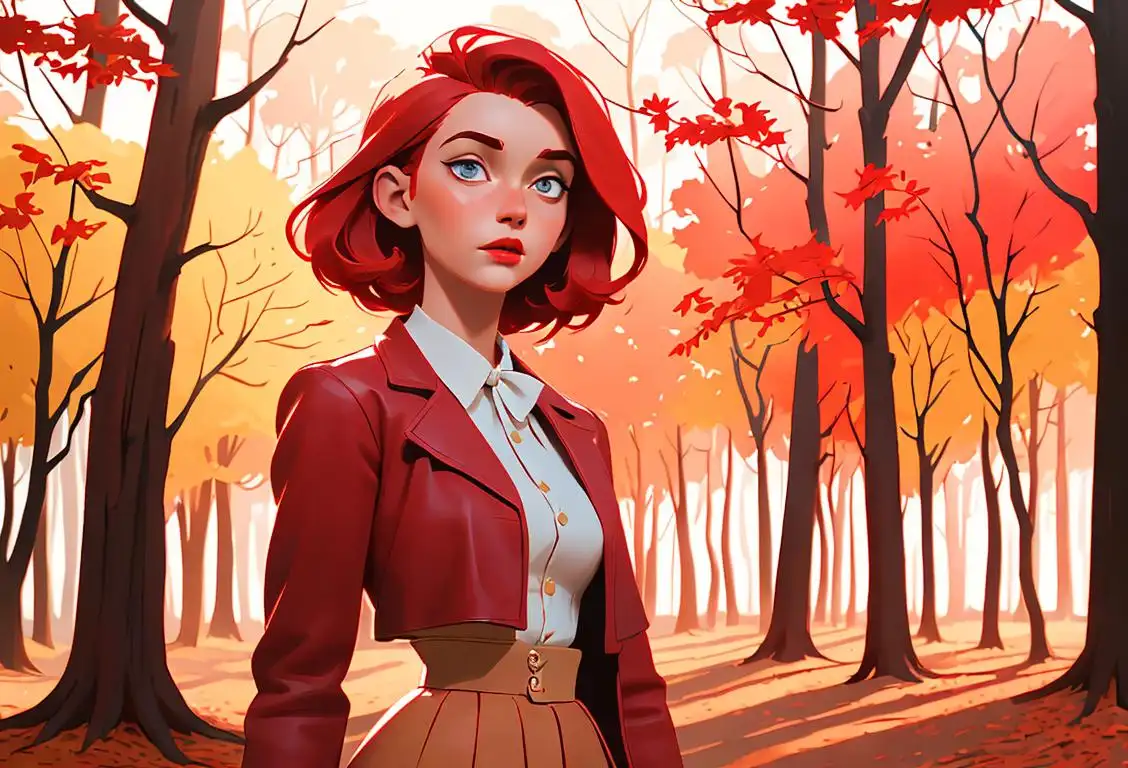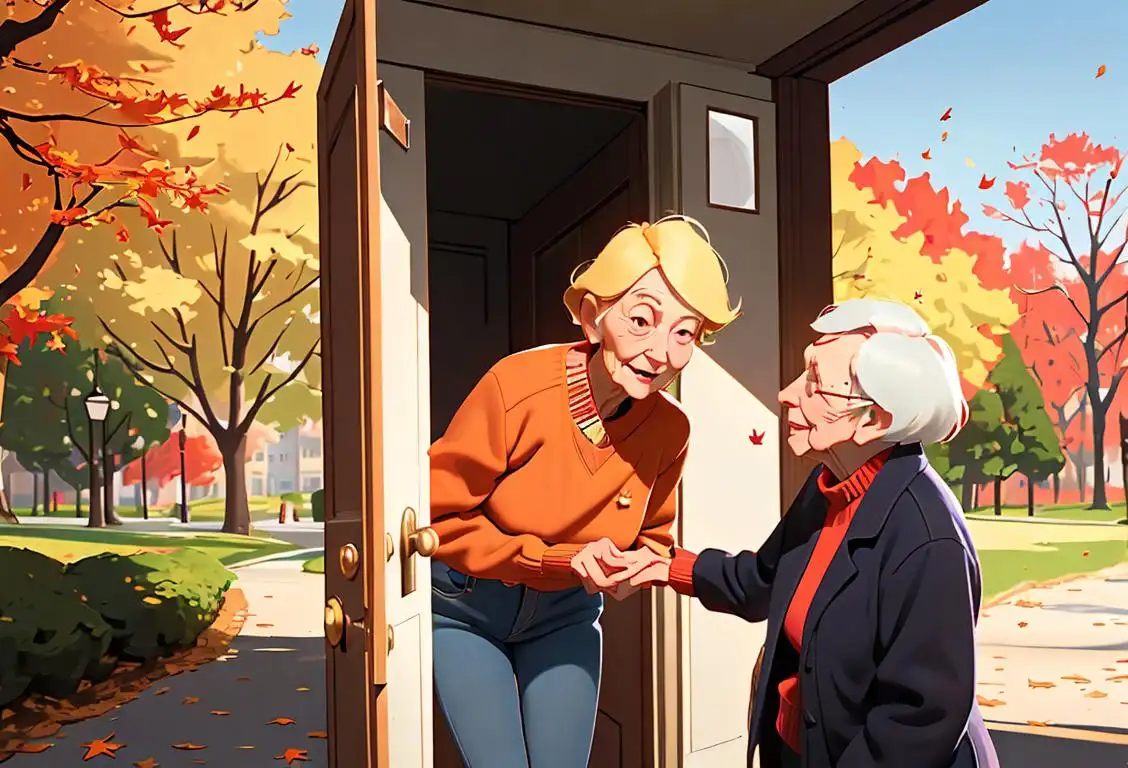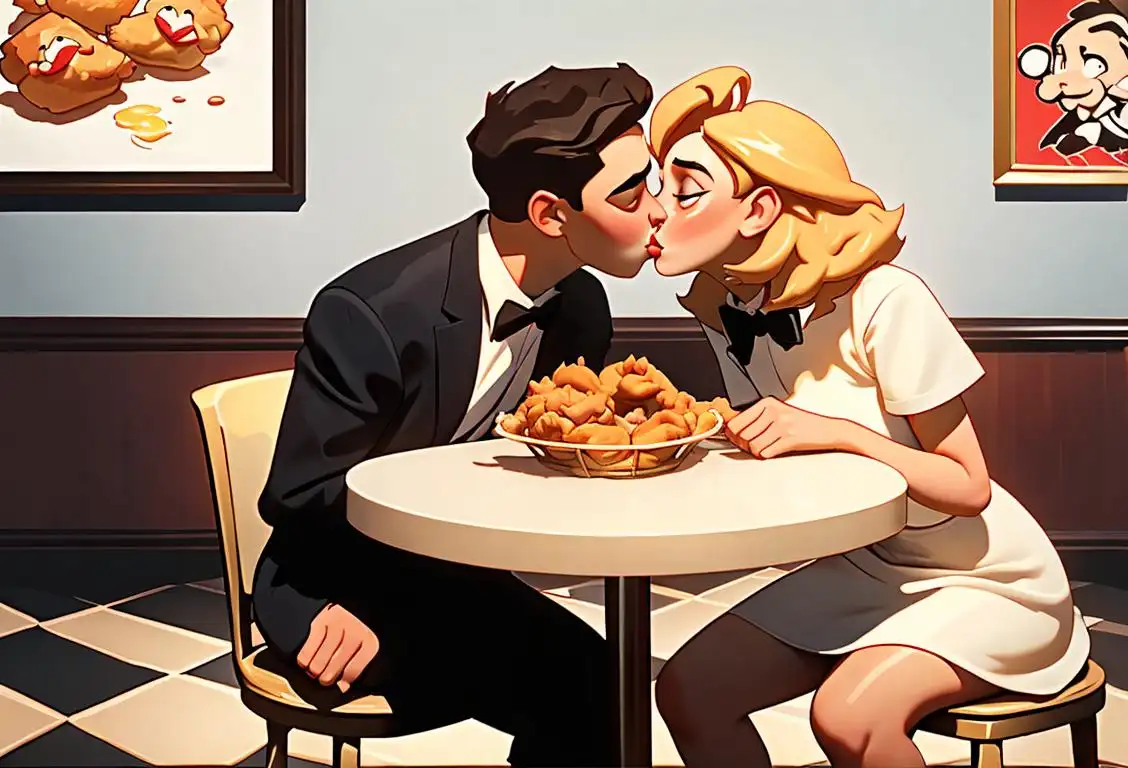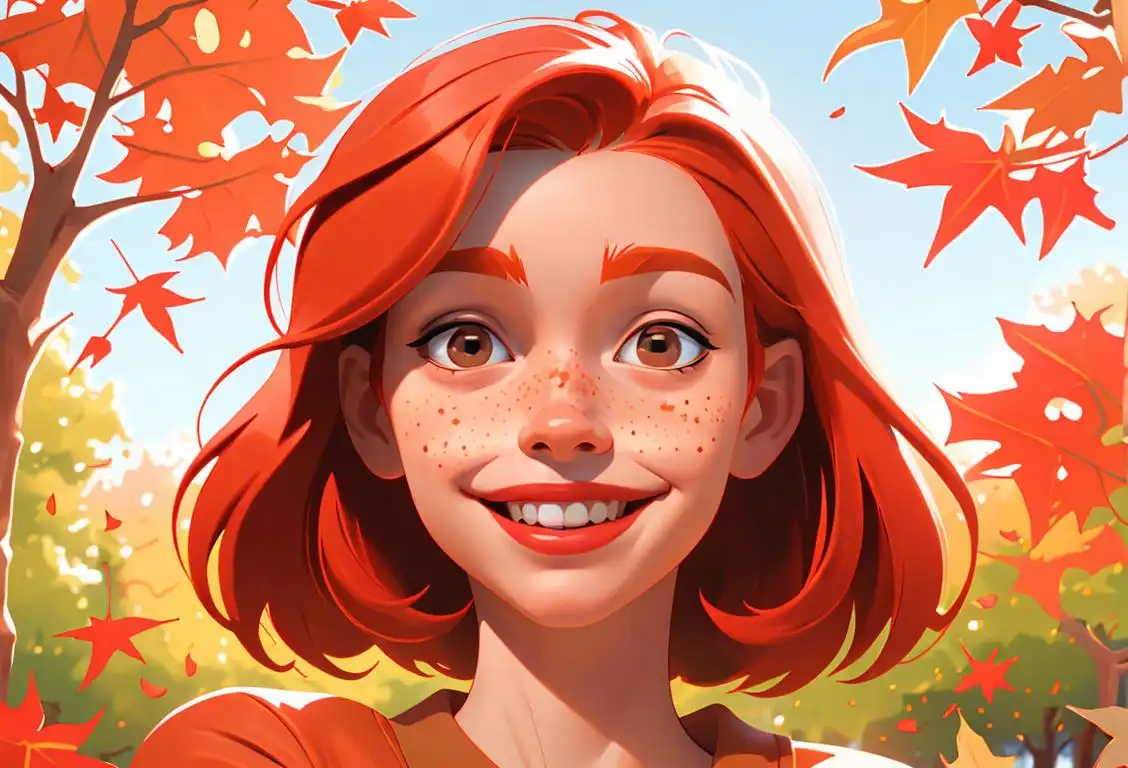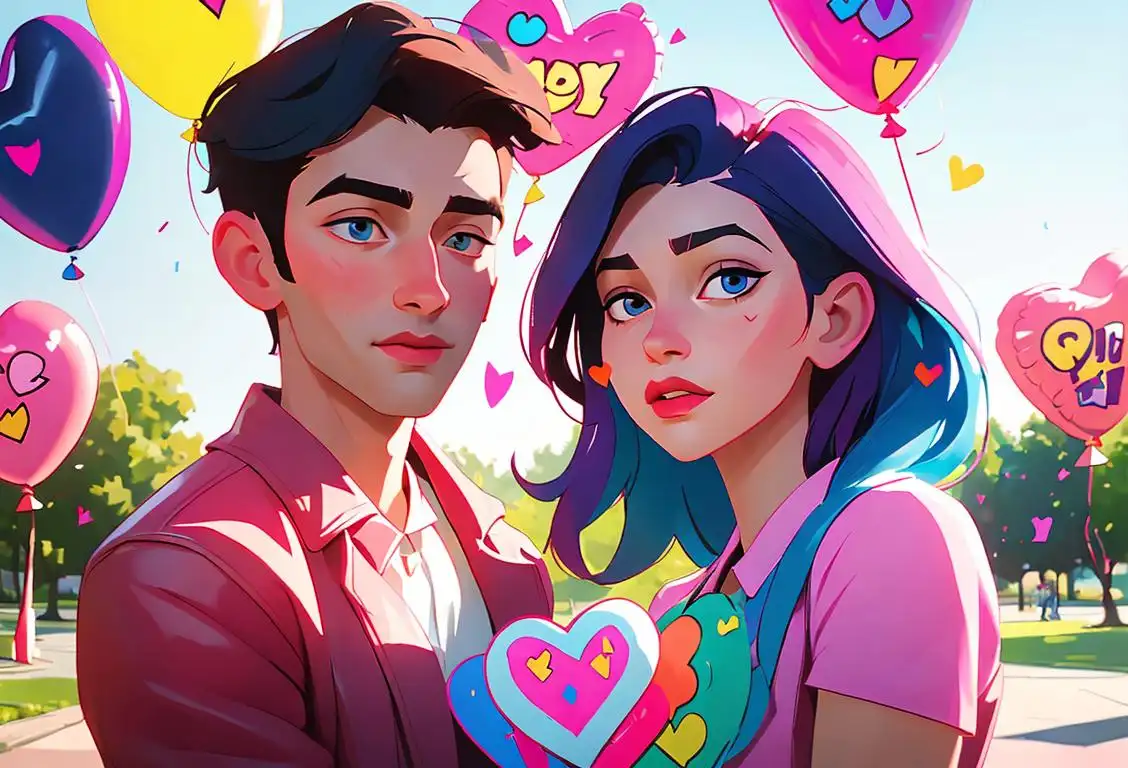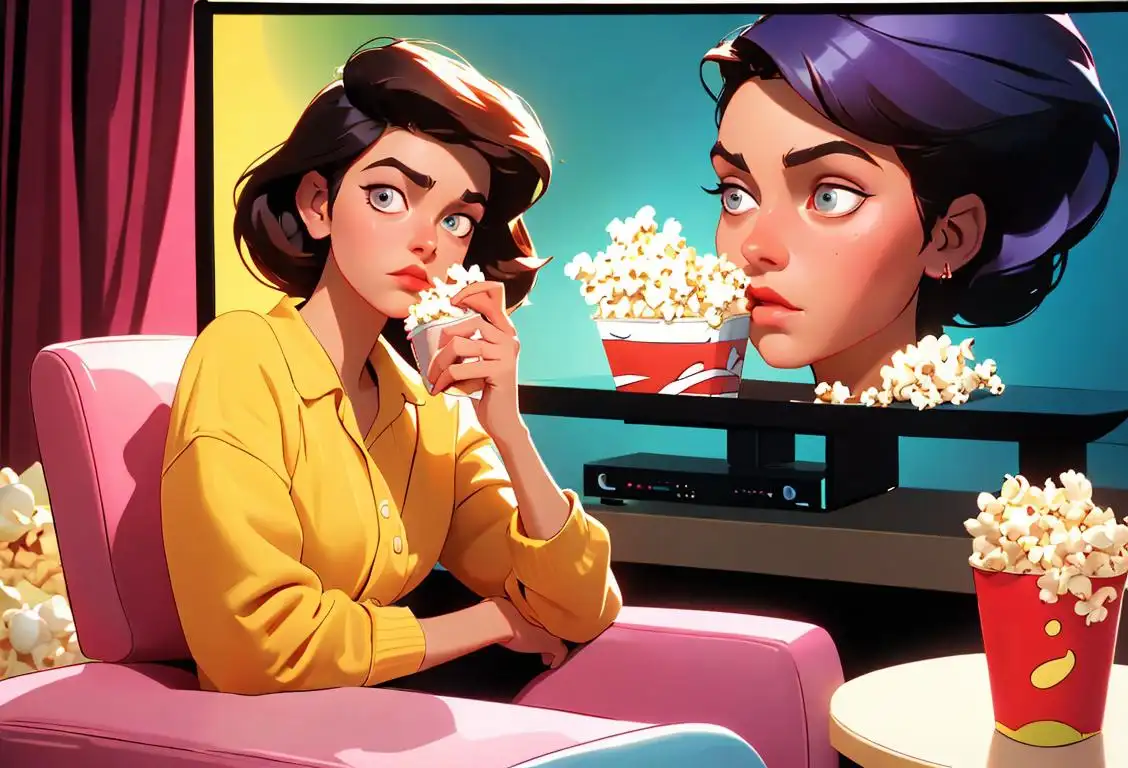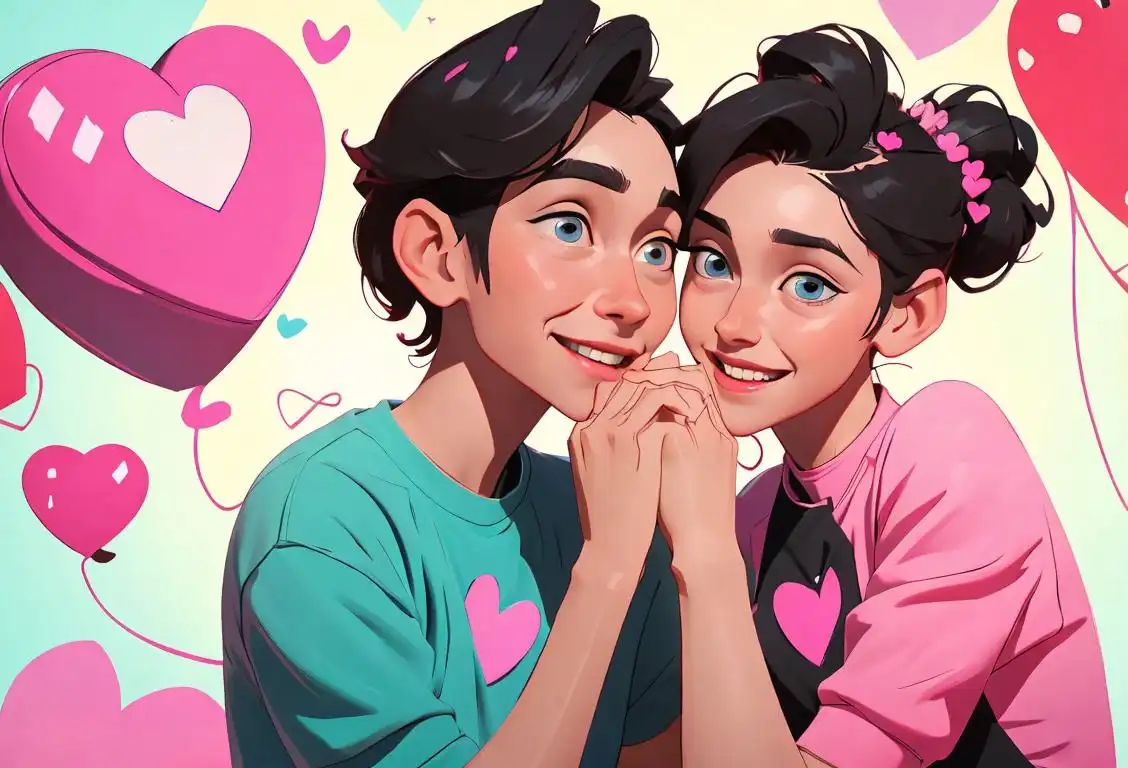National Bestest Friend Day
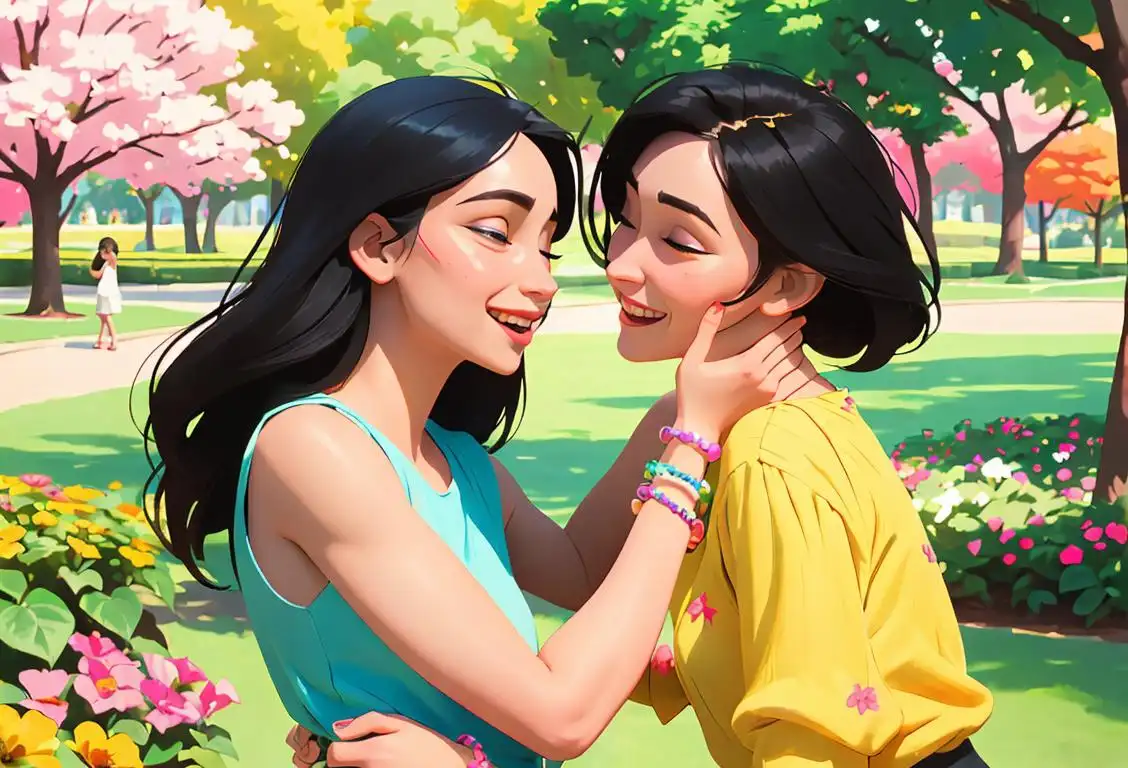
Hey there, folks! Today we have a national day that celebrates those extraordinary friendships that make life a little sweeter. Yes, it's National Bestest Friend Day! Grab your bestie, your partner in crime, your ride or die, and let's dive into the delightful history of this special day.
When is Bestest Friend Day?
It's national bestest friend day on the 9th June.
The Internet and National Bestest Friend Day
Just like a good friendship, the history of National Bestest Friend Day is a bit mysterious. We scoured the depths of the internet and found not one, not two, but 23 mentions of this awesome day. The most buzz it garnered was on June 9th, 2016. It seems like people couldn't contain their excitement about celebrating their bestest buddies.
The True Origins of Bestest Friend Day
Now, as much as we'd love to tell you there's an ancient story or a famous figure behind this day, the truth is a tad less extraordinary. National Bestest Friend Day seems to have originated on the internet, where it quickly gained popularity through social media and community forums. It's a testament to the power of friendship and our desire to express gratitude for our closest pals.
How to Celebrate Bestest Friend Day
Looking for ways to show your bestest friend how much they mean to you on this special day? Here are a few heartwarming ideas:
- Plan a fun-filled day with your bestie: Go on an adventure, have a movie marathon, or have a game night.
- Write a heartfelt letter: Express all the reasons why your bestest friend is, well, the bestest.
- Send them a surprise gift: It could be a small token of appreciation or something meaningful that symbolizes your friendship.
- Create a scrapbook of memories: Gather all the photos and mementos that represent your friendship and create a beautiful keepsake.
Remember, the most important thing is to spend quality time with your bestest friend and let them know just how much they mean to you. So go ahead and celebrate the day in the bestest way possible!
History behind the term 'Bestest Friend'
1916
Expression of deep friendship
The term 'bestest friend' originated in the year 1916. It was first used to describe the closest and most cherished friendships. This expression conveyed a deep bond and a level of affection that went beyond simply being 'best friends'.
1880
The birth of 'bestest'
During the late 19th century, the term 'bestest' emerged as an informal and playful variation of the word 'best.' It originated in colloquial English, particularly in American English, as a way to emphasize the superlative nature of a close friendship or relationship. 'Bestest' quickly became popular among children and young adults as a cutesy, upbeat term to express the strongest bond between individuals.
1920
Emergence of the Term
In the roaring 1920s, the term 'bestest friend' began to make its appearance in popular culture. The term 'bestest' is a playful alteration of 'best,' emphasizing a close and intimate bond between individuals. It is believed to have originated from the casual slang that was prevalent during this time, reflecting the lightheartedness and exuberance of the era.
1969
The Playground Bond
The term 'bestest friend' is believed to have originated on playgrounds across the United States in 1969. Children started using this playful variation of 'best friend' to express an even stronger level of friendship and camaraderie. It quickly gained popularity among youngsters, who loved the emphasis the term placed on their special connection.
1940s
Emergence of the term 'bestest'
In the 1940s, the term 'bestest' started to emerge as a colloquial form of 'best.' Derived from the superlative form of 'best,' this playful modification became popular among young people and close-knit communities. Its usage conveyed a deep sense of intimacy and affection, suggesting a level of closeness beyond what 'best' alone could express.
1910
The Emergence of 'Best Friend'
The term 'best friend' first came into popular usage around 1910. It refers to a person with whom one shares a strong and close bond. The term emphasizes the idea of friendship as being the most important and meaningful connection in someone's life.
1885
Early Usage of the Word 'Bestest'
In 1885, the word 'bestest' made its first known appearance in English literature. It was derived from the word 'best,' which had been in use since the 14th century and meant 'excellent' or 'most good.' 'Bestest' was formed by adding the superlative ending '-est' to 'best,' creating a playful and exaggerated version of the word.
1920
The Emergence
The term 'bestest friend' emerged in the early 1920s as a colloquial expression to describe an exceptionally close and cherished friendship. The superlative 'bestest' was added to emphasize the unparalleled bond between two individuals.
1950
Cultural references boost 'bestest'
In the 1950s, the entertainment industry played a significant role in solidifying the usage of 'bestest.' Songs, movies, and TV shows often depicted characters speaking about their 'bestest friend,' further popularizing the term. This cultural exposure solidified 'bestest' as a recognizable phrase, embedding it in the collective consciousness of many English speakers and contributing to its usage in everyday conversations.
1920
Colloquial Usage Gains Popularity
During the 1920s, the term 'bestest' gained popularity in colloquial speech, particularly in informal conversations among close friends. The word became associated with a deep sense of affection, highlighting the strong bond and intimacy shared between individuals who considered themselves as each other's 'bestest friends.' It became a way to express the highest level of camaraderie and trust.
1923
Popularity in informal conversations
By 1923, the term 'bestest friend' had gained popularity in informal conversations among young people. It was commonly used as a playful way to emphasize the strength of a friendship. The term captured the idea that the person being referred to as a 'bestest friend' held a special place in someone's life.
1950
Popularization in Pop Culture
In the 1950s, the term 'bestest friend' gained traction and started appearing frequently in popular culture, including books, movies, and television shows. Its usage became more widespread, making it a commonly understood phrase to describe a meaningful friendship.
1950s
The connection to friendship
During the 1950s, the term 'bestest' became increasingly associated with the concept of friendship. It was often used to refer to someone who was considered a person's closest and most trusted friend. The usage of 'bestest' in this context highlighted the special bond and deep connection between individuals, indicating a level of loyalty and support that surpassed ordinary friendships.
1960
The Evolution to 'Bestest Friend'
In the 1960s, an intensifying trend in language and slang led to the emergence of variations on popular terms. The term 'bestest friend' started to gain popularity during this time. 'Bestest' is an exaggerated form of 'best' and is used to convey a sense of utmost closeness and affection.
1950
Children's Vernacular
During the 1950s, the term 'bestest friend' gained popularity among children. It became a common phrase used by youngsters to describe their closest companion or confidant. The simplicity and endearing nature of the term appealed to the innocence and sincerity of childhood friendships.
1975
Children's Literature
During the mid-1970s, children's literature began incorporating the term 'bestest friend' in numerous stories and books. Authors realized the significance of this term to young readers and used it to depict the unwavering loyalty and trust between characters. The term's prevalence in children's literature further solidified its place in popular culture.
1950
Bestest Friend Enters Children's Vocabulary
In the 1950s, 'bestest friend' became a common phrase in children's vocabulary. Kids started using it to designate their closest and most cherished friend, emphasizing a sense of loyalty and mutual admiration. The term reflected the significance of friendship in the lives of young children and their desire to have a special person whom they considered their 'bestest friend.'
1985
Pop Culture Adoption
The term 'bestest friend' became more widespread in the 1980s, thanks to its frequent usage in popular culture. It appeared in various TV shows, movies, and books, further solidifying its place in common language. People of all ages started using and adopting the term to describe their closest friendships.
1980
The rise of 'bestest' in colloquial language
By the 1980s, 'bestest' had firmly established itself as a widely accepted colloquial term for a very close friend. It became especially prevalent in informal conversations among children, teenagers, and young adults. Its endearing, lighthearted nature made it particularly popular among these age groups, and it became a key part of their lexicon.
1950
Inclusion in children's literature
In the 1950s, the term 'bestest friend' made its way into children's literature. It appeared in books that aimed to teach children the values of friendship and loyalty. The relatable and endearing phrase became a beloved part of storytelling, resonating with young readers and solidifying its place in popular culture.
1990
Popularity in All Ages
By the 1990s, 'bestest friend' had transcended its origins and become a widely recognized term across different age groups. While predominately used by children and adolescents, adults also embraced the term to express the depth of their friendships. Its usage extended to greeting cards, personal letters, and everyday conversations, enriching the vernacular of friendship.
1970
Cultural Expression and Media Influence
In the 1970s, the term 'bestest friend' became increasingly integrated into popular culture. It was frequently used in children's books, television shows, and movies, further cementing its place in the lexicon of friendship. This cultural expression contributed to the widespread adoption and recognition of the term.
1970s
Widespread usage
By the 1970s, the term 'bestest' had gained widespread popularity, particularly among younger generations. It became a popular expression to describe a person's closest friend or confidant. This term was embraced by various subcultures and communities as a way to convey the significance of certain friendships. The word 'bestest' flourished in informal conversations, love letters, and heartfelt messages exchanged among friends.
1970
The Rise of Childhood Friendships
During the 1970s, the idea of childhood and lifelong friendships gained significance. The term 'bestest friend' began to be commonly used by children and teenagers to express their closest and most trusted companions, reflecting the value placed on these relationships during this era.
Early 21st century
Mainstream usage and online buzz
With the advent of social media and online communication, 'bestest' experienced a surge in popularity. The internet provided a platform for people to share their 'bestest friend' stories, and the term became increasingly used in online communities and platforms such as blogs, forums, and social networking sites. Its informal and affectionate tone made it a perfect fit in the casual online conversations common today.
1990
Internet and Social Media Usage
The advent of the internet and social media in the 1990s empowered people to connect and communicate on a global scale. The term 'bestest friend' found new life in online forums, chat rooms, and messaging platforms, allowing individuals to express their close friendships in a fun and playful manner.
2005
Internet and Social Media Influence
The rise of the internet and social media platforms in the 2000s led to 'bestest friend' gaining even more popularity. Online communities and forums adopted the term, allowing individuals to express their close bonds with others. Memes, hashtags, and viral content played a significant role in spreading the term's usage globally, creating a sense of belonging and shared experiences.
1990s
Internet and digital culture influence
With the advent of the internet and digital communication in the 1990s, the term 'bestest' found a new platform for its expression. It became a frequent inclusion in online chat rooms, instant messaging conversations, and early social networking sites. The concise and informal nature of 'bestest' made it perfect for the evolving digital landscape, where brevity and lightheartedness were often favored.
Present
Modern Usage
In modern times, 'bestest friend' continues to be used as an endearing and informal way to emphasize the exceptional bond between two individuals. It is often used by children, teenagers, and adults alike to describe their closest and most cherished friendships. This term has become ingrained in popular culture and is recognized as an affectionate way to refer to a very close friend.
1990
Internet Influence
With the advent of the internet in the 1990s, the term 'bestest friend' found its way into digital communication. Online chat rooms, instant messaging, and later, social media platforms all contributed to the popularization of the term as a way to describe online friendships as well.
1980
Widespread usage in colloquial language
During the 1980s, the term 'bestest friend' became a widely recognized and accepted phrase in colloquial language. It was used to express the unparalleled closeness and trust between individuals. This informal term brought a sense of warmth and familiarity to conversations and epitomized the idea of a true friend.
1980
Pop Culture References and Increased Usage
By the 1980s, 'bestest friend' had firmly embedded itself in popular culture. It appeared in various forms of media, including books, television shows, and movies. Its usage expanded beyond childhood friendships to encompass relationships of all ages. The term became an endearing way to describe the strongest and most cherished bonds between individuals, regardless of their age or background.
Present
Continued Usage and Evolution
In the present day, 'bestest friend' remains a beloved term, representing an affectionate and enduring bond between two individuals. It has become deeply ingrained in modern culture, often used to describe both real-life and virtual friendships. The term continues to evolve, adapting to changing societal norms and digital landscapes.
Present
Continued Usage and Online Presence
In the present day, 'bestest friend' remains a beloved term for expressing the highest level of friendship. It is often used in cards, social media posts, and personal conversations to honor and celebrate the special connection shared with someone considered a 'bestest friend.' The term has also found its place in the digital age, with hashtags and online communities dedicated to recognizing and appreciating 'bestest friends' all around the world.
2005
Internet memes and social media influence
With the rise of internet culture and social media in the early 2000s, the term 'bestest friend' found new life through memes and online communities. People began using the phrase humorously to exaggerate the significance of their friendships. It became a lighthearted way to celebrate the special connection they shared with someone.
Present
Enduring Term of Endearment
Today, 'bestest friend' continues to be a cherished term of endearment used to describe the closest and most trusted friends in a person's life. It resonates with people of all ages, evoking a sense of warmth and familiarity. Despite its informal origins, the term has gained cultural significance and remains a beloved expression of deep friendship.
Present
Continued usage and endearment
Today, the term 'bestest friend' continues to be used as an endearing and affectionate way of describing a person's closest and most cherished friend. It has become a beloved term of endearment that carries a sense of warmth, trust, and unwavering support. The enduring popularity of 'bestest friend' serves as a reminder of the importance of meaningful and long-lasting friendships in our lives.
Present
Continued Cultural Relevance
In the present day, 'bestest friend' remains a beloved term that symbolizes deep friendship and mutual support. It has become a part of our everyday language, strengthening connections between individuals and reminding us of the enduring power of friendship. Whether spoken by a child on the playground or shared through social media, 'bestest friend' continues to bridge gaps and create tight-knit communities.
Did you know?
Did you know that studies have shown that having a bestest friend can actually improve your health? Yep, researchers have found that close friendships contribute to lower stress levels, increased lifespan, and improved overall well-being. So, with every laugh and shared moment, you and your bestie are boosting each other's health! How amazing is that?Tagged
romance fun loved onesFirst identified
8th June 2015Most mentioned on
9th June 2016Total mentions
23Other days
Love Your Red Hair Day
Do Something Nice Day
Suicide Prevention Month Day
Kissing Fried Chicken Day
Kiss A Ginger Day
Iloveyou Day
Compliment Day
Happiness Day
Tv On The Same Day
Boyf Day
